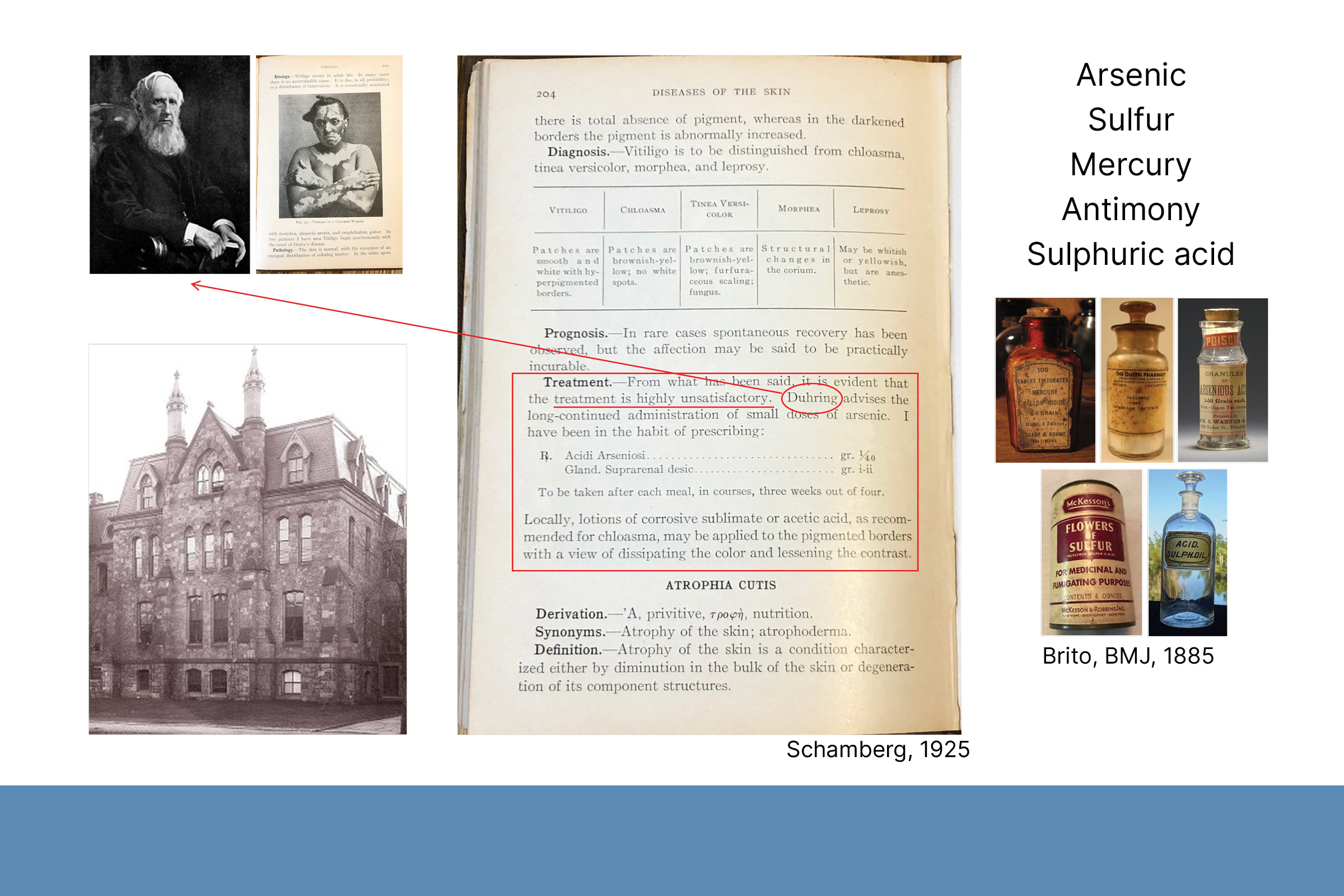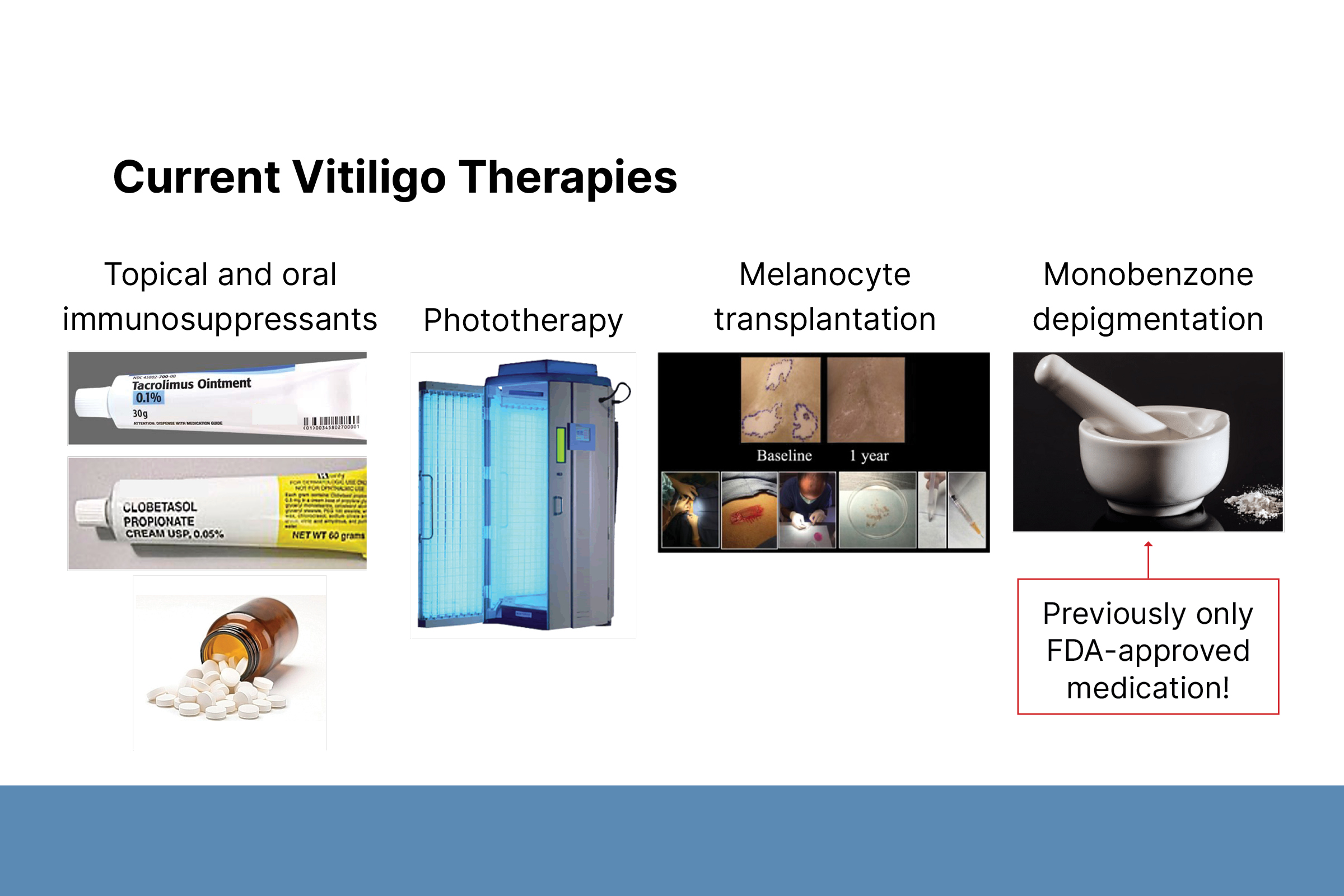Vitiligo Treatment from the Iron Age to the Age of Biologics: New Hope for an Ancient Disease
John E. Harris, MD, PhD
Professor and Chair of the Dermatology Department at the University of Massachusetts, Chan Medical School; Founding Director of the Vitiligo Clinic and Research Center; and Founding Director of the Autoimmune Therapeutics Institute
December 2023
Dr. Harris presented an overview of past and present treatments for vitiligo, including advances in vitiligo research and ongoing work to improve vitiligo treatment in the future.
First, Dr. Harris described research that led to FDA approval of topical ruxolitinib for vitiligo. Dr. Harris sought to develop targeted immunotherapies that could treat vitiligo while avoiding the side effects of systemic immunotherapy. His research described the interferon gamma (IFN-γ) signaling pathway and showed that inhibition of pathway components prevented and reversed vitiligo in mice. Initial human studies showed that Janus Kinase inhibitors can treat vitiligo, providing the basis for testing in clinical trials. In Phase 3 trials of topical ruxolitinib, 30% of patients achieved the primary outcome, leading to FDA approval in 2022.
Second, Dr. Harris shared research that identified skin-resident memory T cells as a new target for vitiligo treatment. Forty percent of patients who stop treatment relapse within one year. Vitiligo almost always comes back to the same place. Dr. Harris and three other research groups identified skin-resident memory T cells as the source of memory of vitiligo. Dr. Harris’ research showed that skin-resident memory T cells are highly sensitive to interleukin- (IL-) 15 blockers, a new therapeutic target. This finding led to the development of the antibody auremolimab that targets the IL-15 receptor. Preclinical trials were promising, and clinical trials are set to begin in 2023.
Third, Dr. Harris presented ongoing research to better understand vitiligo beyond the IFN-γ and IL-15 pathways. This research analyzed samples from patients’ skin using single-cell RNA sequencing to map a network of cellular communication. Further study of these networks could offer additional opportunities for new therapies. Dr. Harris received a five-year P50 Award from the National Institute of Arthritis and Musculoskeletal and Skin Diseases (NIAMS) to continue this work and establish the Vitiligo Center of Research and Translation (VCORT) at UMass Chan Medical School.
To conclude, Dr. Harris shared two stories of collaborations that have led to promising results in preclinical work: (1) conjugated small interfering RNA targeting the IFN-γ receptor in the skin developed with Dr. Anastasia Khvorova, and (2) a skin-tethered bispecific antibody targeting IFN-γ with Dr. John Stanley. Dr. Harris hopes that dermatologists ten years from now will have improved treatment options for patients with vitiligo.




